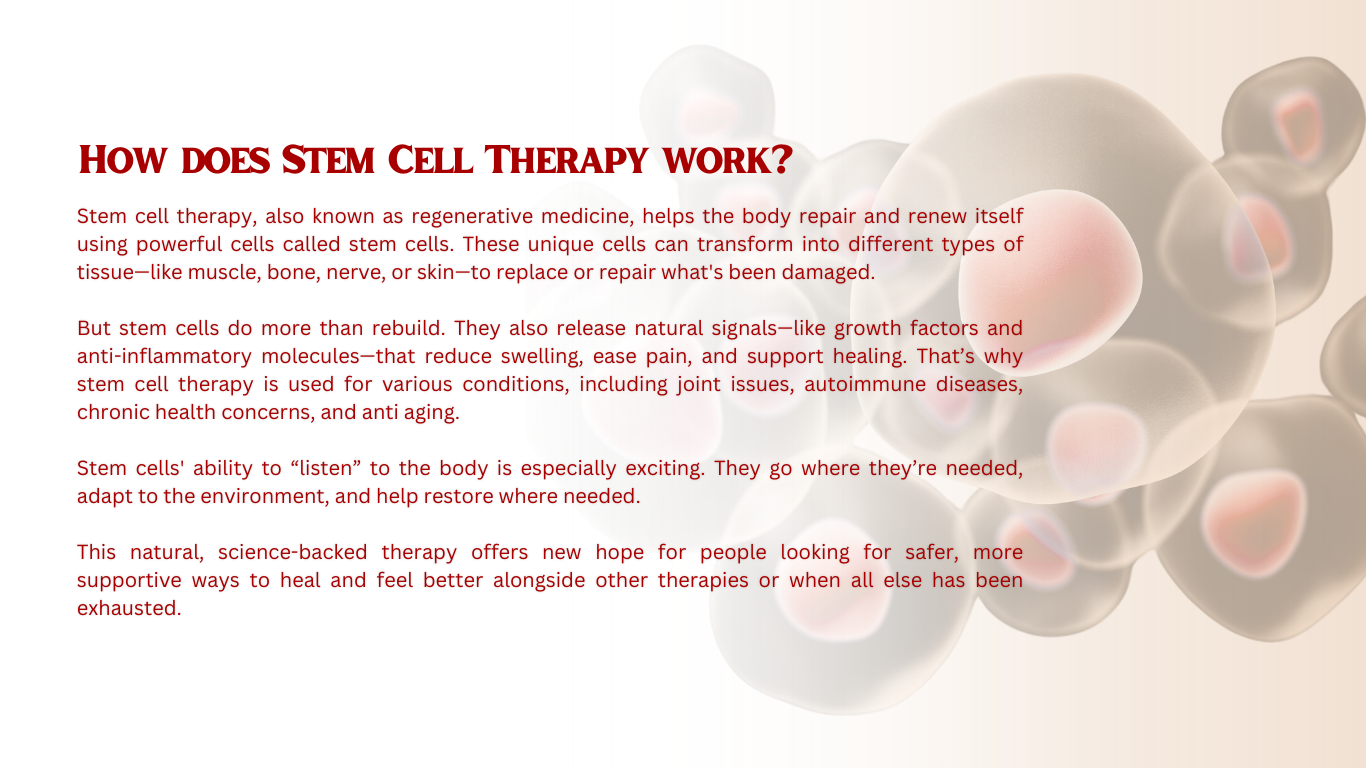STEM CELL
Umbilical Cord Mesenchymal Stem Cells (UC-MSCs)
Umbilical Cord Mesenchymal Stem Cells (UC-MSCs) are highly regenerative cells with self-renewal capabilities and the ability to differentiate into various cell types, including nerve, muscle, and bone cells. UC-MSCs are abundantly found in Wharton’s jelly within the umbilical cord and are considered more immature than mesenchymal stem cells derived from bone marrow. This makes them less immunogenic and gives them broader therapeutic potential.
Studies have shown that UC-MSCs play a role in tissue repair and regeneration and exhibit strong biological activity in inhibiting tumor cell growth and migration. Additionally, UC-MSCs support the hematopoietic microenvironment, enhance stem cell transplant success, and hold potential in treating hematological diseases and neurological disorders. Various neurotrophic factors, such as Vascular Endothelial Growth Factor (VEGF), Glial cell line-Derived Neurotrophic Factor (GDNF), and Brain-Derived Neurotrophic Factor (BDNF), secreted by UC-MSCs, contribute to nerve cell growth and accelerate the healing process.
With their multi-directional differentiation capabilities and immunomodulatory effects, UC-MSCs have emerged as a leading candidate in regenerative therapy, transplantation, and the treatment of various medical conditions with limited treatment options.
Where Science Meets Hope: Conditions Being Explored with Stem Cell Therapy
With their multi-directional differentiation capabilities and immunomodulatory effects, UC-MSCs have emerged as a leading candidate in regenerative therapy, transplantation, and the treatment of various medical conditions with limited treatment options.
Its key areas of potential include:
- Tissue Regeneration – Assisting in the repair or replacement of damaged tissues such as cartilage, muscle, and nerves.
- Disease Modulation – Helping regulate immune responses in autoimmune and inflammatory conditions.
- Inflammation Reduction – Releasing anti-inflammatory compounds that may ease chronic pain and reduce cellular damage.
- Functional Recovery – Aiding recovery of lost functions in chronic illnesses or after injury.
- Disease Modification – In certain conditions, therapy may slow or influence disease progression.
- Medical Research – Used in drug development and safety testing to advance future treatments.
Neurological & Neurodegenerative
- Parkinson’s disease
- Multiple sclerosis
- Stroke recovery
- Traumatic brain injury
- Peripheral neuropathy
- Early-stage Alzheimer’s disease
Autoimmune & Inflammatory
- Rheumatoid arthritis
- Lupus (SLE)
- Crohn’s disease
- Ulcerative colitis
- Psoriasis
Orthopedic & Degenerative Joint Conditions
- Osteoarthritis
- Degenerative disc disease
- Rotator cuff and soft tissue injuries
- Chronic tendonitis
Chronic & Metabolic Conditions
- Type 2 diabetes (adjunctive support)
- Fibromyalgia
- Chronic Fatigue Syndrome
- Erectile dysfunction
- Early-stage kidney and liver concerns
Viral & Post-Viral Recovery
- Long COVID
- Epstein-Barr Virus (EBV) complications
- Hepatitis (supportive care in integrative plans)
Cardiopulmonary & Circulatory Health
- COPD and pulmonary fibrosis
- Mild circulatory issues
- Support for cardiovascular wellness in early or stable stages
Regenerative Wellness & Vitality
- Skin and hair vitality
- Hormonal transitions (menopause/andropause)
- Healthy aging and immune support
@2025 Blood Ozone Bali
Ready to Begin Your Regenerative Journey?
Please submit your question, and our team will reply soon.
Open Monday – Saturday from 9am – 5 pm
Sunday Closed
bloodozonebali@gmail.com




